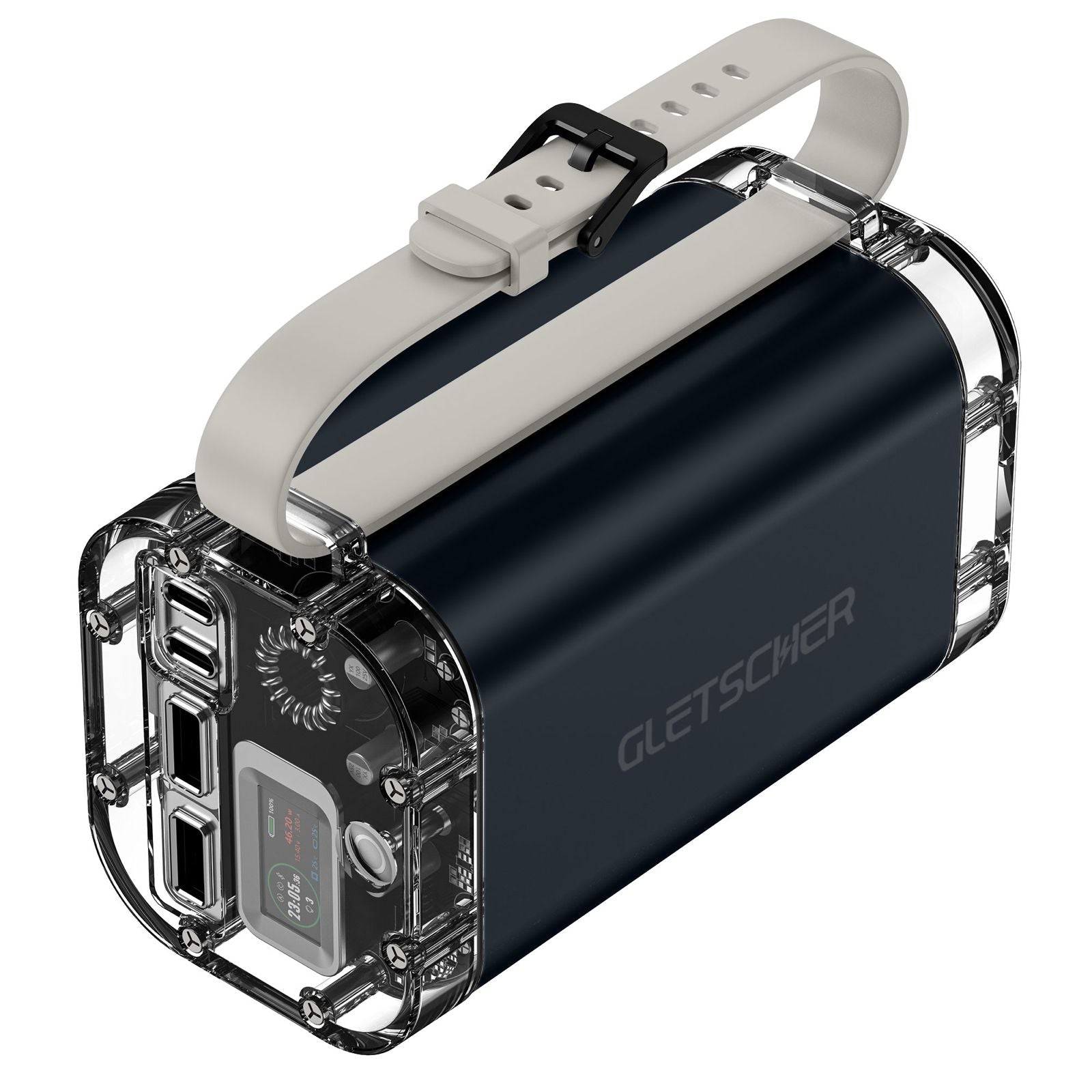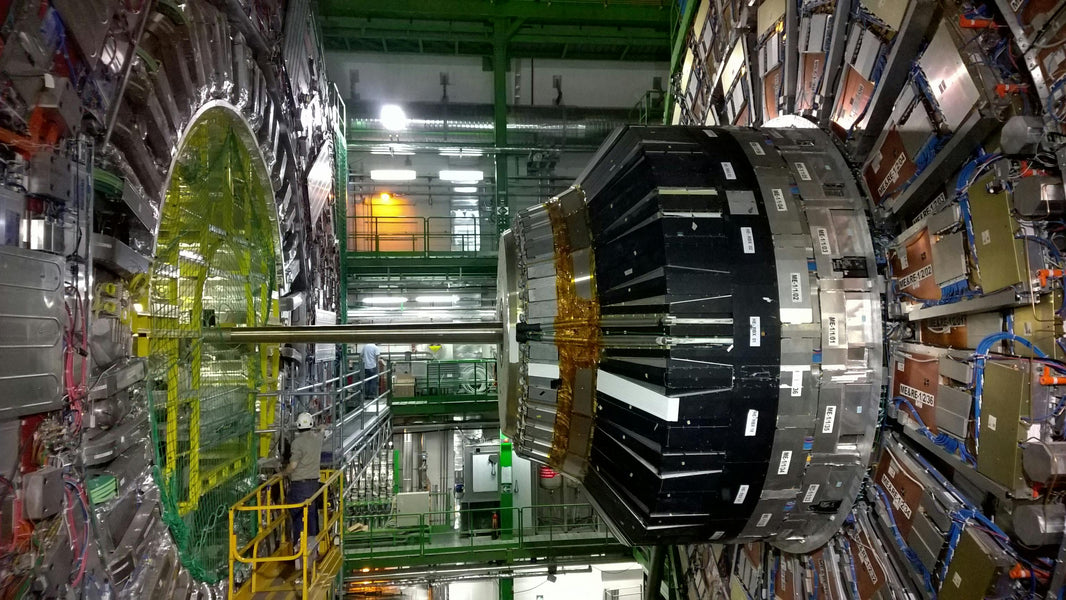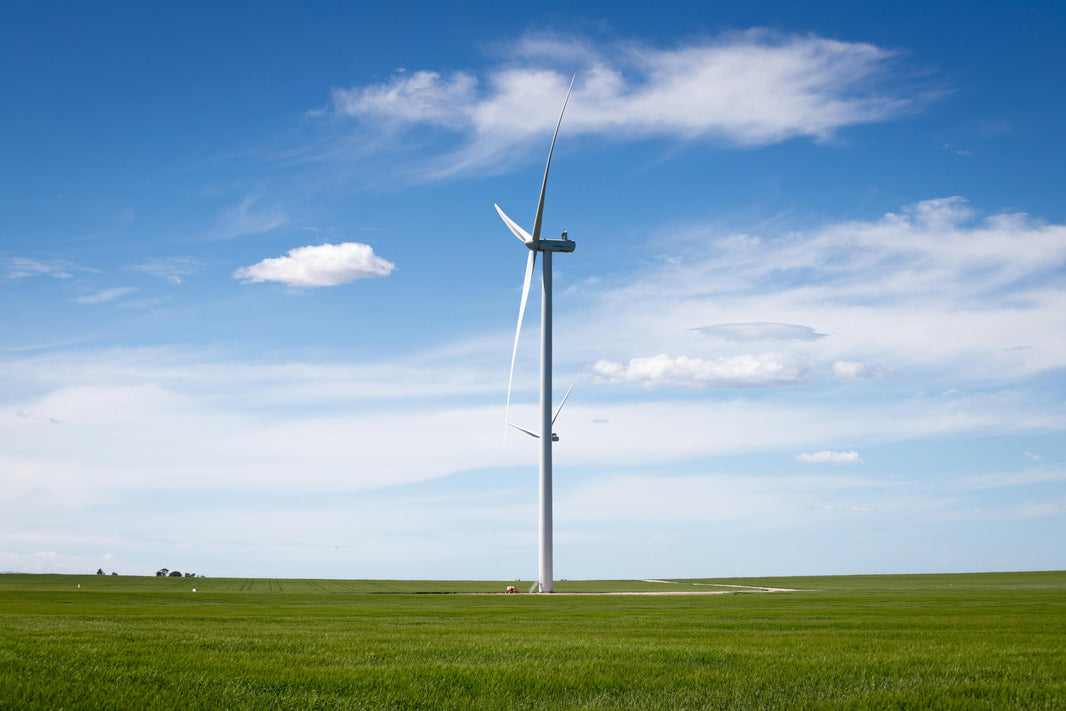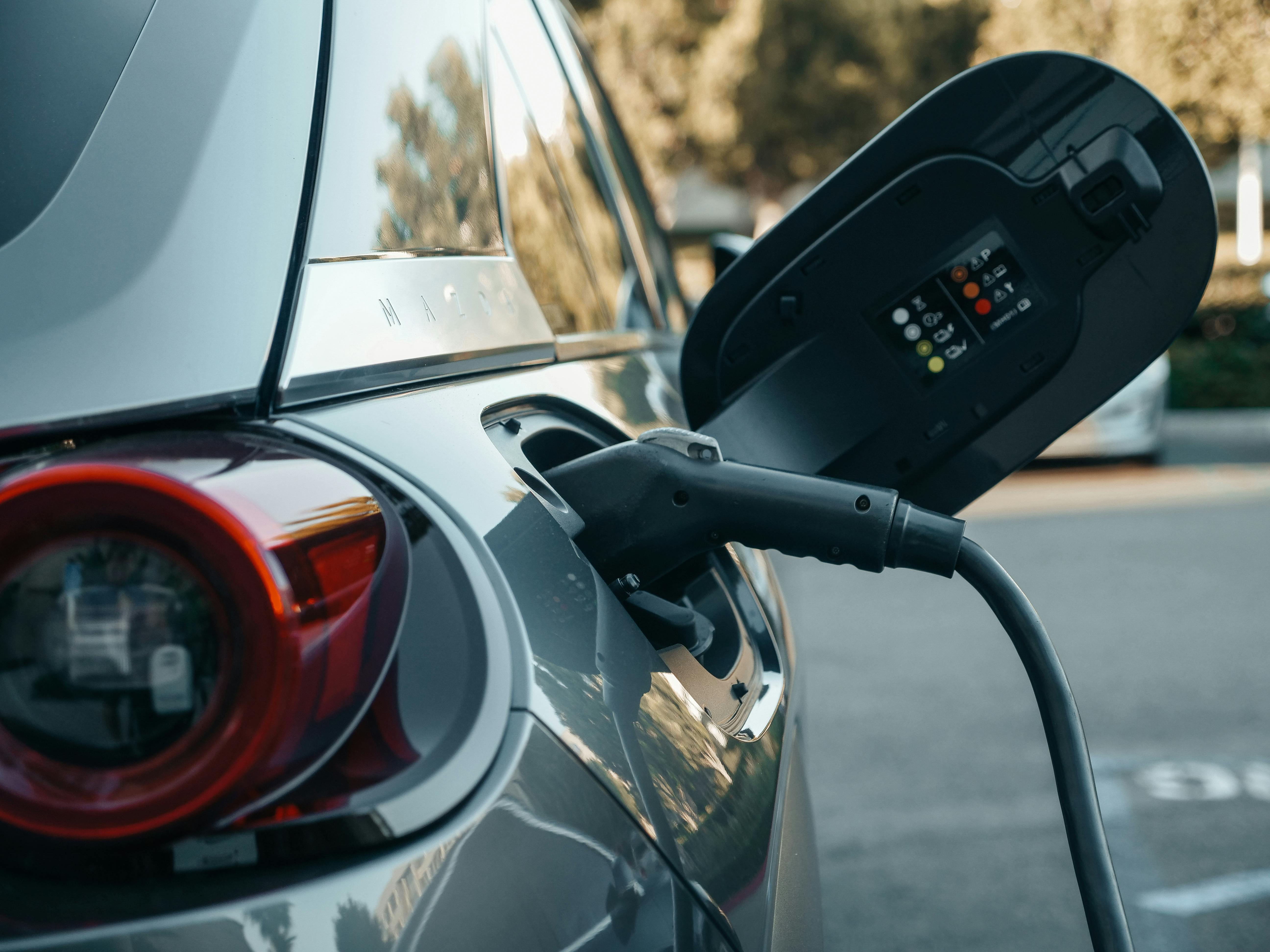Introduction: Rising Demand in Challenging Environments
From remote desert operations to disaster-stricken cities, organizations are increasingly seeking reliable off-grid power solutions. In the Middle East and other regions with harsh climates and sparse grid coverage, portable power stations have become critical. A recent analysis highlights that the Middle East (including GCC nations, Egypt, and South Africa) will see increased adoption of portable power stations due to challenging weather and the necessity for power in off-grid locations. Unlike traditional fuel generators, modern battery-based stations offer quiet, clean energy – a key advantage as users increasingly prefer battery units for being safer and greener than gasoline generators. Whether for military forward bases, emergency response units, or engineering teams in the field, the demand for rugged, efficient, high-capacity portable power has never been more urgent.
Military, Emergency, and Field Operations: Critical Power Needs
Portable power stations are moving from niche gadget to mission-critical equipment across sectors. Below are some of the scenarios driving this growing need:
Military & Defense: Modern defense operations rely on electronics – communications gear, radar units, drones, and command centers – often deployed far from any grid. Tactical teams require mobile generators that provide substantial power silently, without exhaust or heat signatures. Batteries avoid the noise and fumes of diesel gensets, enabling stealth and safety. They also reduce logistical strain; rather than trucking fuel convoys through hostile terrain, units can leverage solar charging in the field. Ruggedness is paramount: military-grade power stations must survive extreme heat, sand, and shock during transport. By delivering high wattage in a portable form, these stations keep command posts and critical systems running reliably during deployments or exercises.
Emergency Response & Disaster Relief: When natural disasters or infrastructure failures knock out electricity, responders need immediate power for medical tents, communication towers, and shelters. Portable battery stations can be rapidly deployed as backup power during blackouts or in disaster zones, keeping lights and life-saving equipment on. They are safe to use indoors (no carbon monoxide risk) and simple to operate, which is crucial amid a crisis. For example, a mobile hospital in a remote area can run ventilators and refrigeration on a high-capacity power station without waiting for fuel resupply. The Middle East’s propensity for extreme heat and occasional grid instability means agencies are investing in these reliable units as part of resiliency planning. In emergency scenarios, having a weatherproof, immediate power source can make the difference in coordinating effective relief.
Field Engineering & Remote Projects: Engineering teams working on oil & gas fields, construction sites, or scientific expeditions often operate miles from the nearest outlet. They require robust power stations to run heavy tools, sensors, and computers off-grid. Traditional solutions involved engine generators or stringing long cables to distant mains – both impractical and hazardous. In contrast, modern battery stations provide stable AC power on-site, drastically improving flexibility. These units must handle large loads (from power drills to satellite uplinks) and endure outdoor conditions. For instance, in a remote construction zone, a single high-capacity station can simultaneously charge power tools and run a field office’s equipment. As one industry source notes, portable stations are now viewed as viable solutions for daily applications, not just camping, especially where grid connectivity is limited or outages are frequent. The result is higher productivity and safety for field teams who can “plug in” anywhere instead of idling truck engines or carrying multiple small generators.
Key Requirements: Rugged, Efficient, High-Capacity Power
Across these use cases, certain requirements consistently emerge. First, ruggedness and durability are non-negotiable – devices must be built to perform in extreme environments. Gletscher Energy’s designs recognize this: units like the Camper series are fully weatherproof, fire-rated, and engineered for safety and reliability. A tough enclosure (often with a high IP weather-resistance rating and shock protection) allows operation through sandstorms, high heat, or humidity without failure. These stations are truly “industrial-grade”, meaning they are **housed in rugged enclosures and can deliver power in remote construction zones, field projects, and emergency sites—**essentially anywhere diesel is no longer an option.
Equally important is efficiency and capacity. Field teams need maximum energy storage and output in a compact package. This translates to high-capacity lithium battery banks coupled with efficient inverters. Advances in battery chemistry have enabled higher energy density, so modern lithium-ion (Li-ion) stations are lighter in weight, charge faster, and last longer than older lead-acid systems. Gletscher Energy leverages these advances (such as lithium polymer cells and smart battery management) to pack more usable watt-hours into a portable unit. The result is higher energy capacity at a lower weight – a crucial performance-to-weight ratio advantage. For context, many well-known portable stations provide on the order of 500–3000 Wh and weigh 20–50 kg or more. By contrast, Gletscher Energy’s professional units are engineered to deliver significantly greater capacity (tens of kWh) without an outsized weight penalty, making them easier to transport and deploy in the field.
Finally, high output and stable power delivery are key. Sensitive electronics and heavy machinery alike require a stable voltage and pure sine wave output. Gletscher Energy’s Camper series meets this with a continuous 230V AC output up to 8,000–13,000 watts (8–13 kW) depending on model. Such output means a single unit can run multiple large appliances or tools simultaneously – for example, powering a communications trailer, satellite uplink, or a bank of power tools, all from one portable power source. These high-capacity inverters are built with industrial-grade safety features (overload protection, surge allowances, etc.) to ensure uninterrupted, stable power delivery anytime, anywhere, even for mission-critical applications.
Gletscher Energy’s portable power stations are built for mission-critical performance, delivering high wattage to run heavy equipment in the field while withstanding harsh conditions. Rugged enclosures, thermal safeguards, and weatherproofing make them reliable even in extreme heat, dust, or emergency environments.
Gletscher Energy’s Camper Series: Power That Moves With You
Gletscher Energy has responded to these needs with a specialized product portfolio of portable power solutions. The Camper Series – part of Gletscher Energy’s high-performance lineup – encompasses professional-grade power stations ranging from about 8 kW up to 13 kW output. These units are designed for mobility and trusted in emergencies, embodying the motto “power that moves with you”. Key offerings include:
Camper PRO Powerstation: A 15 kW-class portable power unit delivering up to 8,000W of instant AC power with stable 230V output. The Camper PRO is built for versatility – equally suited to commercial off-grid work, outdoor events, or backup power during outages. It features industrial-grade safety (preventative thermal controls, surge protection) and a hardened exterior that is weatherproof and fire-resistant. Easy to deploy and rugged, the Pro can travel to a construction site or remote camp and ensure uninterrupted power for tools, lighting, and critical equipment. Gletscher Energy describes it as “the smart solution for professionals who need reliable energy on demand,” highlighting its role in ensuring high-capacity power anytime, anywhere.
Camper Elite Powerstation: A heavy-duty model providing a massive 13,000W of professional-grade output (230V AC) for truly mission-critical needs. The Camper Elite is engineered for extreme conditions – it remains fully operational in harsh environments, being weatherproof and fire-rated for safety. This makes it ideal for military field operations, large-scale outdoor events, or mobile command centers. The Elite can reliably run a forward operating base’s communications and surveillance systems or serve as primary backup for a field hospital. Durable and scalable, it’s built to deliver uninterrupted power where it matters most, and multiple units can be linked or stacked to scale up capacity as needed. In short, the Camper Elite is the ultimate energy companion for high-demand scenarios, marrying raw power with portability.
Gletscher Energy’s Camper series units feature high-capacity internal batteries (with industry-leading energy density), advanced inverter technology, and a modular design philosophy. The entire series is fire-safe and weatherproof by design – a crucial differentiator in environments where lesser consumer-grade devices might fail. By providing options like the Pro and Elite, Gletscher Energy ensures that clients can choose a solution sized to their needs, whether it’s powering a few kilowatts of gear or acting as a 15 kWh+ mobile power bank for an entire field team. Moreover, Gletscher Energy offers complementary solutions (such as Makellos' high-efficiency solar panels and the Onyx lithium-polymer energy storage systems) to integrate with the Camper stations for a complete off-grid setup. This holistic approach allows clients in the Middle East and beyond to build a reliable, scalable energy infrastructure – from portable batteries to renewable generation – all with a single integrated provider.
Outperforming Traditional Solutions: Gletscher Energy vs. the Competition
When compared to common market competitors, Gletscher Energy’s advantages in performance-to-weight ratio and deployment versatility become clear. Many well-known portable power stations (aimed originally at the consumer/outdoor market) have significant limitations in professional use. For example, a typical high-capacity unit like the Goal Zero Yeti 6000X provides around 6 kWh of storage and a 2000W AC inverter, and weighs about 48 kg (106 lbs). Another popular model, EcoFlow’s Delta Pro, offers ~3.6 kWh capacity with a 3600W output inverter, at roughly 45 kg weight. These systems are effective for camping or home backup of small appliances, but scaling them to military or industrial tasks would require chaining multiple units, adding complexity and weight. Furthermore, many such devices are not weatherproof – they generally must be shielded from rain or sand, as they were designed for recreational use.
Gletscher Energy’s portable stations were purpose-built to overcome these limitations. Table 1 highlights a comparison:
|
Feature |
Gletscher Camper Series (Pro/Elite) |
Typical Portable Unit (Leading Brand) |
|---|---|---|
|
Continuous AC Output |
Up to 8–13 kW (230V single-phase) |
~2–3 kW (single-phase) |
|
Energy Capacity |
High (Multi-kWh, e.g. ~10–15 kWh usable) – modular expandable |
Moderate (often 1–6 kWh internal battery) |
|
Weight (approx.) |
Designed for mobility – higher Wh per kg (light for capacity) |
Heavy for capacity (e.g. ~48 kg for a 6 kWh unit) |
|
Rugged Design |
Industrial-grade: Weatherproof, fire-resistant casing |
Consumer-grade: Typically not water/dust proof; indoor or fair-weather use |
|
Scalability |
Modular & stackable – units can link for more power |
Limited – some allow extra battery packs, but no true high-voltage linking |
|
Deployment |
Plug-and-play; wheeled or handled for field deployment, silent running (no fuel) |
Requires two-person carry or cart; audible inverter hum, limited by battery size |
|
Charging Options |
AC mains input; solar PV integration for renewable charging (optional kits); possible 12/24V DC input |
AC input; some support solar panels (slower charge); no direct fuel option (generators separate) |
Table 1: Comparing Gletscher’s Camper Series vs. typical market alternatives in performance, capacity, and ruggedness.
Gletscher Energy offers greater power and capacity per unit, meaning fewer units are needed to support a given operation. Just as importantly, its focus on weight-efficient design makes each station more portable – an important factor if equipment must be hand-carried or quickly repositioned. For instance, delivering 10+ kWh of energy might require two or three standard 100 lb units, whereas a single Camper Elite can handle the job with power to spare. Additionally, Gletscher Energy’s products maintain output stability under heavy loads, whereas smaller competitors often cannot sustain output for high-wattage tools or multiple large devices for extended periods.
Technical Highlights: Battery Chemistry, Charging, and Integration
Gletscher Energy’s advantages stem from technical innovations as much as from raw specs. The battery chemistry used in Camper series stations is a high-performance lithium-based system (e.g., lithium nickel-manganese or lithium polymer) with a smart Battery Management System. This yields not only high energy density (i.e., lighter weight for a given capacity) but also longevity and safety. Each unit is fire-rated and equipped with active thermal management to prevent overheating – an essential consideration in Middle Eastern climates where ambient temperatures can soar. The integrated BMS and fire-resistant design provide peace of mind that even under heavy use or high heat, the risk of thermal runaway or failure is minimized. As a global energy safety case study noted, smart BMS integration “prevents thermal events, extends cycle life, and sets a new benchmark for … safety” in battery systems. This commitment to safety allows Gletscher’s portable stations to be deployed in sensitive environments (like hospitals or ammunition depots) where older generators or inferior batteries would pose unacceptable risks.
In terms of charging options, Gletscher Energy power stations are built with flexibility. They can be rapidly recharged from standard AC mains – for example, at base camp or a depot before deployment – and then transported to the field fully charged. For extended off-grid use, solar charging is a game-changer: Gletscher Energy provides compatible solar panel systems to recharge the Camper units using sunlight. Given the Middle East’s abundant solar resource, a field team can set up foldable panels by day to recharge their power station, enabling continuous operation without fuel deliveries. Industry trends confirm that users are increasingly interested in devices that can be charged from renewables like solar, driving manufacturers to improve solar charging capabilities. Gletscher Energy’s solutions align with this trend, featuring solar integration as a core feature rather than an afterthought. In addition, some models may allow DC input from vehicle alternators or external battery banks, adding to the versatility in recharging methods. Fast-charging technology ensures that even the largest units can be topped up in a matter of hours (depending on source capacity), reducing downtime between deployments.
Modular integration is another strength of Gletscher Energy’s design. The Camper series can function as standalone generators, but they are also engineered to work in concert. Units have stackable form factors and can be paralleled for higher total output or energy. This means a network of Gletscher Energy batteries could power a larger micro-grid for a base camp or be distributed across a site for localized power hubs. Moreover, the company’s broader product ecosystem (including inverters, UPS systems, and EV chargers) means the Camper stations can integrate into a hybrid setup – for instance, acting as the energy storage core of a solar-plus-battery microgrid, or as a drop-in UPS to back up critical infrastructure. The ability to tie into uninterruptible power supply systems is worth noting for agencies like hospitals or telecommunications providers: a Camper unit can be on standby charge and automatically kick in during a grid outage, with <20ms transfer time for seamless switchover (as suggested by similar 3kW UPS products in the region ). In field applications, this modular approach extends to portability as well – multiple units can be deployed in different teams or locations, then aggregated when a larger power “wall” is needed.
Durability features complement this integration. Gletscher Energy’s power stations are built to withstand physical stress, with reinforced frames and shock-absorbing mounts protecting the internal battery cells. Connectors and outlets are typically industrial grade (weather-sealed covers, high-cycle life), suitable for the rough handling of military or emergency use. The operating temperature range is wide, ensuring functionality in intense desert heat or chilly high-altitude nights – a critical spec in Middle East theatres where daytime and nighttime conditions vary drastically. By combining these engineering considerations, Gletscher Energy has created a solution that deploys as easily as a briefcase generator but functions as a resilient power node. Field operatives can focus on the mission at hand, confident that their power source is up to the task.
Portable power stations like Gletscher Energy’s Camper series offer deployment versatility unmatched by traditional generators. They can be wheeled into position, used to charge electric vehicles or equipment on-site, and integrated with solar panels for sustainable operation. Unlike gasoline gensets, they deliver power silently and without emissions, which is invaluable for military and emergency operations.
Conclusion: Powering the Future of Field Operations
As the Middle East continues to advance its infrastructure and face unique security and climatic challenges, the importance of agile power solutions will only grow. Military procurement officers, emergency response coordinators, and field engineers are all recognizing the value of high-capacity portable power stations that combine rugged durability with cutting-edge efficiency. Gletscher Energy’s Camper series exemplifies this value proposition – offering the ability to bring “power that moves with you” to virtually any environment. By providing lighter-weight units with higher energy output than common alternatives, Gletscher Energy enables its B2B clients to do more with less: more power with fewer units, longer operation with less downtime, and more resilience with fewer vulnerabilities. The performance-to-weight gains and deployment versatility of these stations translate to real operational advantages, be it in a humanitarian relief camp or a front-line military outpost.
In summary, portable power stations have evolved into a strategic asset for organizations operating beyond the grid. With innovations in battery technology and system design, companies like Gletscher Energy are delivering solutions that are not just portable but practically indispensable for modern field operations. They ensure that whenever the grid fails or is out of reach, critical work keeps running on full power – quietly, cleanly, and reliably. For the Middle East’s militaries, emergency services, and industrial pioneers, this new generation of portable power is lighting the way toward a more resilient and responsive future .









